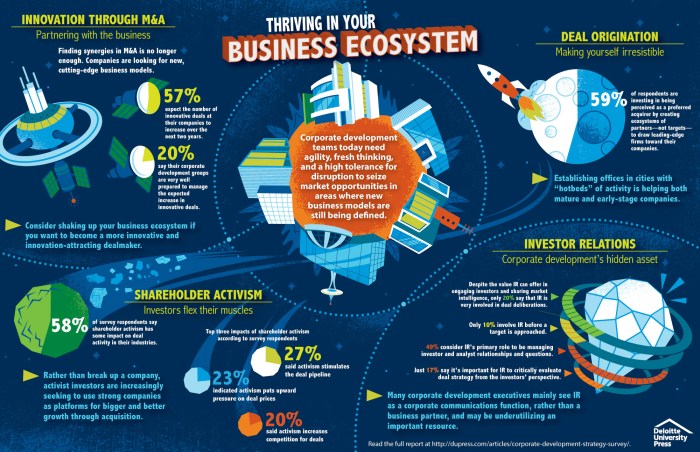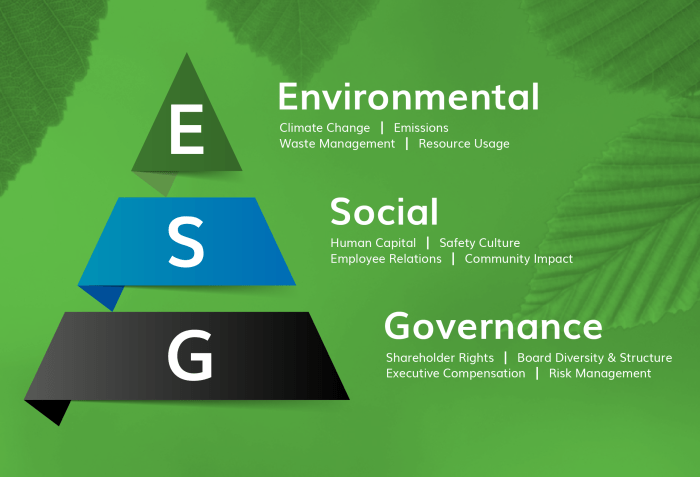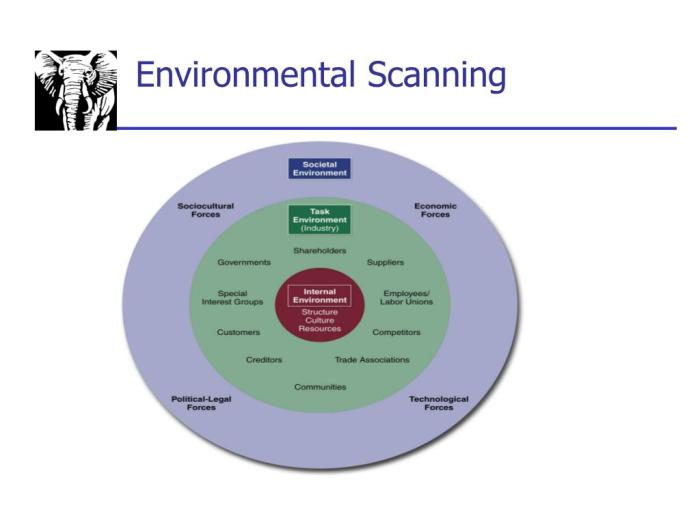
External business environment challenges set the stage for this enthralling narrative, offering readers a glimpse into a story that is rich in detail with an entertaining interactive style and brimming with originality from the outset. From technological disruptions to global competition, the twists and turns of external challenges keep businesses on their toes.
Exploring the impact of these challenges and the strategies to overcome them unveils a world of opportunities amidst the chaos, making this topic not just informative but also intriguing.
External Business Environment Challenges
The external business environment refers to factors outside of a company that can impact its operations and success. These challenges are often beyond the control of the business but must be addressed to mitigate risks and adapt to changing circumstances.
Examples of External Factors
- Market Competition: Rival companies offering similar products or services can pose a threat to a business’s market share and profitability.
- Economic Conditions: Fluctuations in the economy, such as recessions or inflation, can impact consumer spending and demand for goods and services.
- Technological Changes: Rapid advancements in technology can make existing products or processes obsolete, requiring businesses to adapt to stay competitive.
- Regulatory Environment: Changes in laws and regulations can introduce compliance challenges and increase operational costs for businesses.
- Global Events: Political instability, natural disasters, or pandemics can disrupt supply chains and international markets, affecting businesses worldwide.
Identifying and Navigating External Challenges
- Conducting Market Research: Businesses can stay informed about industry trends, customer preferences, and competitor strategies through market research.
- Scenario Planning: Developing contingency plans for potential external threats can help businesses anticipate challenges and respond effectively.
- Building Strategic Partnerships: Collaborating with suppliers, distributors, and other stakeholders can provide businesses with support and resources to navigate external challenges.
- Continuous Monitoring: Regularly monitoring external factors and adjusting business strategies accordingly can help businesses proactively address challenges as they arise.
Impact of External Challenges on Businesses

External challenges can have a significant impact on a company’s operations, growth, and profitability. These challenges can come in various forms, such as changes in government regulations, economic downturns, shifts in consumer behavior, or even natural disasters.
Short-term versus Long-term Impacts
Short-term impacts of external challenges may include immediate disruptions to supply chains, production delays, or sudden changes in demand. This can lead to increased costs, decreased revenues, and potentially lower profits in the short term. On the other hand, long-term impacts can result in lasting damage to a company’s reputation, loss of market share, or even bankruptcy if not addressed effectively.
Strategies to Mitigate Impact
- Stay informed and anticipate challenges: Regularly monitor industry trends, regulatory changes, and market conditions to proactively identify potential threats.
- Diversify operations and revenue streams: By expanding into new markets or offering new products/services, businesses can reduce their reliance on any single source of revenue.
- Build strong relationships with stakeholders: Maintaining good relationships with suppliers, customers, and other key partners can help businesses navigate external challenges more effectively.
- Invest in technology and innovation: Embracing new technologies and innovative solutions can enhance operational efficiency and competitiveness, making businesses more resilient to external shocks.
- Create a contingency plan: Developing a robust contingency plan that Artikels steps to be taken in the event of different external challenges can help businesses react quickly and effectively when faced with unexpected circumstances.
Technological Disruptions

Technological advancements can significantly impact businesses by creating external challenges that require adaptation and innovation. Industries across the board have experienced disruptions due to rapid changes in technology, leading to shifts in consumer behavior, market dynamics, and competitive landscapes.
Examples of Industries Facing Technological Disruptions
- The Retail Industry: Traditional brick-and-mortar retailers have been challenged by the rise of e-commerce giants like Amazon, forcing them to invest in online platforms and omnichannel strategies to stay competitive.
- The Transportation Industry: The emergence of ride-sharing services like Uber and Lyft has disrupted the taxi industry, prompting traditional taxi companies to adapt their business models and incorporate technology for better customer experiences.
- The Media Industry: Print media has faced significant challenges with the shift to digital platforms, leading to the decline of newspapers and magazines as online news sources gain popularity.
Adapting to Technological Disruptions
- Investing in Innovation: Businesses can stay ahead of technological disruptions by investing in research and development to create new products or services that meet evolving consumer needs.
- Embracing Digital Transformation: Companies can adapt to technological changes by embracing digital transformation, integrating technology into all aspects of their operations to increase efficiency and improve customer experiences.
- Collaborating with Tech Partners: Partnering with technology companies can help businesses leverage new innovations and stay competitive in rapidly changing markets.
Globalization and Market Competition
Globalization has significantly intensified market competition for businesses, as companies now have to compete not only with local firms but also with international players. This increased competition brings about various challenges that businesses must navigate to stay relevant and successful in a globalized market.
Impact of Globalization on Market Competition
- Increased Competition: Globalization has opened up markets to companies from around the world, leading to a more crowded and competitive marketplace.
- Price Wars: With more players entering the market, companies often engage in price wars to attract customers, leading to shrinking profit margins.
- Technological Advancements: Globalization has also accelerated technological advancements, making it crucial for businesses to keep up with the latest innovations to remain competitive.
Challenges Faced by Businesses in a Globalized Market
- Cultural Differences: Operating in different countries means dealing with diverse cultures, languages, and consumer behaviors, posing a challenge for businesses to effectively connect with their target audience.
- Legal and Regulatory Hurdles: Adhering to various regulations and laws in different countries can be complex and costly, requiring businesses to invest in legal expertise and compliance measures.
- Supply Chain Risks: Globalization has made supply chains more complex and vulnerable to disruptions, such as natural disasters or political unrest, affecting business operations and profitability.
Strategies for Staying Competitive in a Global Business Environment
- Market Research and Adaptation: Conducting thorough market research and adapting products/services to meet the specific needs of different markets can give businesses a competitive edge.
- Strategic Partnerships: Forming strategic partnerships with local companies or suppliers can help businesses navigate cultural and regulatory challenges while expanding their reach.
- Investing in Innovation: Continuous investment in innovation and technology can help businesses stay ahead of the competition and meet evolving consumer demands in a globalized market.
Final Review
As we conclude this journey through the realm of external business environment challenges, it becomes evident that adaptability and innovation are key to thriving in the face of adversity. By understanding, preparing, and strategizing, businesses can transform challenges into stepping stones for success.
Top FAQs
How can businesses effectively navigate external challenges?
Businesses can navigate external challenges by staying agile, conducting thorough market research, and fostering innovation within their organization.
What are some examples of industries facing disruptions due to technological advancements?
Industries such as retail, transportation, and healthcare have faced significant disruptions due to technological advancements like e-commerce, autonomous vehicles, and telemedicine.
How does globalization impact market competition for businesses?
Globalization intensifies market competition by opening up businesses to a wider pool of competitors from around the world, making differentiation and innovation crucial for survival.







